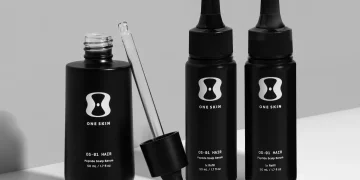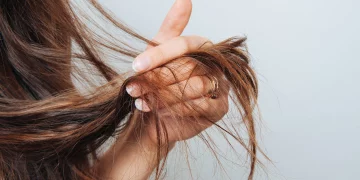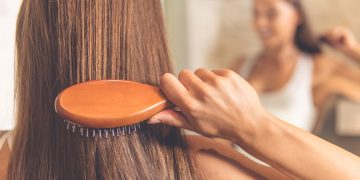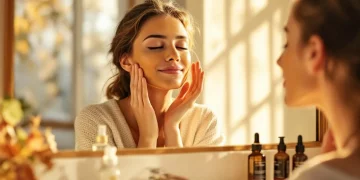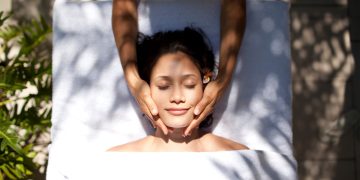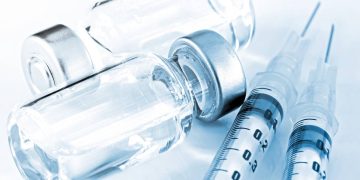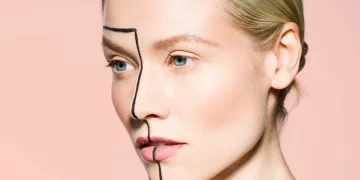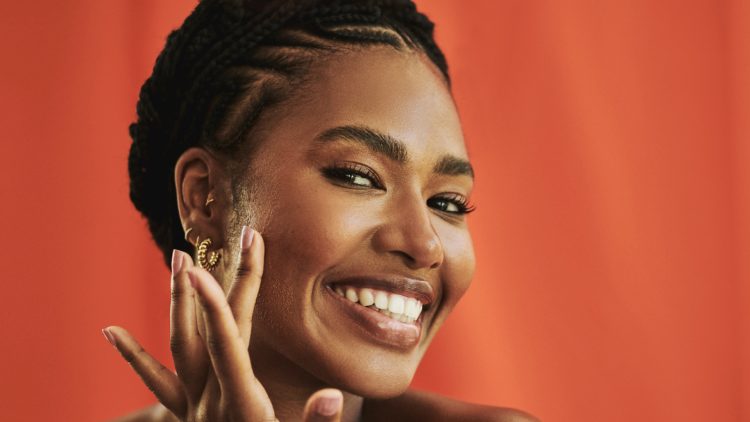Aging hair is one of the most universal—and least discussed—signs of growing older. While fine lines and changes in skin texture often receive more attention, the transformation that happens on our scalp tells an equally compelling story. Hair ages biologically, structurally, and chemically, just like the rest of our body. The shift can be subtle at first: a stray gray strand, a slight loss of volume, or a texture that feels different than it once did. But behind these changes are well-studied scientific processes, involving melanin decline, oxidative stress, follicular aging, and cellular regeneration.
The question many people are now asking is bold: If we understand how hair ages, can we actually reverse it?
With advances in peptide serums, antioxidant therapies, and stem-cell–inspired solutions, the possibility is closer than we once imagined.
This article explores the biology of hair aging, why it happens, and how modern science is attempting to turn back the clock—from the root.
What Really Happens When Hair Ages?
Hair aging is not a single event but a gradual biological evolution influenced by genetic, hormonal, and environmental factors. It affects three main characteristics:
1. Color (Melanin Loss)
Hair gets its color from melanin produced by melanocyte cells in each follicle. As we age:
- Melanocytes decline in number
- Their activity becomes irregular
- Melanin synthesis slows dramatically
This leads to graying—the most visible hallmark of aging hair.
2. Texture and Structure
Aged hair often becomes:
- Coarser or more wiry
- Thinner in diameter
- More prone to breakage
- Less elastic
These changes stem from a reduced production of structural proteins like keratin and diminished sebaceous gland activity.
3. Density
Hair follicles undergo the miniaturization process that reduces growth cycles and increases shedding. Over time, some follicles stop functioning completely.
Understanding these biological shifts allows us to explore whether science can intervene in melanin production, follicle health, and cellular resilience.
Why Does Melanin Decline? The Biology Behind Gray Hair
Melanin loss is one of the most studied aspects of hair aging. It’s not simply a matter of pigment disappearing—it’s a complex phenomenon involving genetics, oxidative stress, and stem cell exhaustion.
Melanocyte Stem Cells (MeSCs): The Core Factor
Every hair follicle contains a reservoir of melanocyte stem cells that ensure pigment production throughout life. With age:
- These stem cells become depleted
- Their ability to migrate to the follicle matrix declines
- Their melanin-producing machinery weakens
Recent studies suggest that the graying process begins long before the first white strand becomes visible.
Hydrogen Peroxide Accumulation
A surprising culprit in the graying process is the buildup of hydrogen peroxide (H₂O₂) inside the follicle. Usually, the enzyme catalase decomposes H₂O₂, but with age:
- Catalase decreases
- H₂O₂ increases
- Melanin is chemically “bleached” from the inside
This oxidative phenomenon is one reason researchers are studying antioxidant and enzyme-support therapies for pigment restoration.
Genetics and Stress
Genetics determine when graying begins, but lifestyle factors may accelerate the process. Chronic stress can disrupt protein regulation around melanocyte stem cells, pushing them toward premature depletion—a discovery supported by recent neurobiological studies.
Oxidative Stress: The Most Destructive Enemy of Hair Youth
Oxidative stress occurs when free radicals overwhelm the body’s ability to neutralize them. Hair follicles, which are highly metabolically active, are particularly vulnerable.
Sources of Oxidative Stress
- UV radiation
- Pollution
- Smoking
- Chemical treatments
- Chronic inflammation
- Psychological stress
These factors damage follicular DNA, degrade structural proteins, dull the cuticle, and disrupt hair growth cycles.
Visible Signs of Oxidative Damage
- Rough texture
- Split ends
- Faster graying
- Weakening and breakage
- Loss of shine
This is why antioxidants—both topical and nutritional—play a critical role in anti-aging hair routines.

Can Peptide-Based Serums Turn Back the Hair Clock?
One of the most exciting developments in cosmetic science is the use of bioactive peptides—short chains of amino acids that signal cells to behave like younger versions of themselves.
How Peptides Help Hair
Different peptides target different aging mechanisms:
1. Growth-Stimulating Peptides
Examples include copper tripeptides and biomimetic peptides that:
- Boost follicle energy
- Improve blood circulation
- Support keratin synthesis
- Reduce follicle miniaturization
These peptides can help maintain thickness and reduce shedding.
2. Pigment-Restoring Peptides
A new class of peptides, including melanin-boosting biomimetics, aim to:
- Activate melanocyte activity
- Help follicles regain pigment production
- Reduce early-stage graying
While not a full reversal of gray hair, they support the follicle’s natural pigment pathway.
3. Anti-Inflammatory Peptides
Chronic scalp inflammation accelerates aging, making soothing peptides valuable for:
- Calming the scalp microbiome
- Reducing oxidative stress
- Extending follicular lifespan
What Peptides Cannot Do (Yet)
- They cannot resurrect dead follicles
- They cannot restore fully depleted melanocyte stem cells
- They cannot reverse advanced genetic hair loss
But they can slow, prevent, and partially reverse the visible signs of aging hair, making them one of the most promising modern treatments.
Nutrition and Supplements: Internal Support for Hair Youth
Hair is made primarily of keratin—an amino acid-rich protein—so diet has a profound effect on its aging journey.
Key Nutrients for Anti-Aging Hair
- Vitamin E & C: combat oxidative stress
- Zinc & Iron: essential for follicle health
- Biotin: supports keratin infrastructure
- Collagen peptides: maintain follicle strength
- Omega-3 fatty acids: reduce inflammation
- Polyphenols: protect pigment cells
Green tea, berries, spinach, nuts, and fatty fish are frequently recommended for their antioxidant profile.
Lifestyle Factors That Accelerate Hair Aging
- High stress
- Poor sleep
- Smoking
- Crash dieting
- Excessive heat styling
- Hormonal imbalance
Reducing these triggers can significantly slow the aging process.
Can We Reverse Hair Aging? The Honest, Science-Based Answer
Complete reversal—returning all gray hair to its original color or restoring lost density—is not yet scientifically possible. However, partial reversal and significant slowing of the aging process are absolutely achievable.
What Modern Science Can Do
- Improve follicle function
- Reduce graying progression
- Restore some pigment in early stages
- Increase hair thickness
- Encourage faster growth
- Strengthen the hair shaft
- Reduce oxidative damage
- Improve shine and texture
Breakthroughs in peptides, antioxidants, stem-cell research, and biomimetic formulations indicate that we’re entering a new era of hair science where aging is more manageable than ever.
What Science Cannot Do (So Far)
- Fully restore pigment in long-term white hair
- Reactivate dead follicles
- Rebuild deeply damaged scalp stem cell reservoirs
Still, the future is exceptionally promising. Clinical trials involving stem cell reactivation, catalytic enzyme therapies, and genetic modulation hint at the possibility of deeper reversal in the next decade.
So, Is Hair Aging Reversible?
The realistic answer is: partially, and increasingly so.
We can slow aging, reduce graying, reverse early pigment loss, improve texture, and support follicular longevity. While aging is inevitable, the expression of aging is highly modifiable.
Hair longevity is no longer just cosmetic—it’s a merging of dermatology, molecular biology, and regenerative science. The more we learn, the closer we get to unlocking youthful hair at the cellular level.













